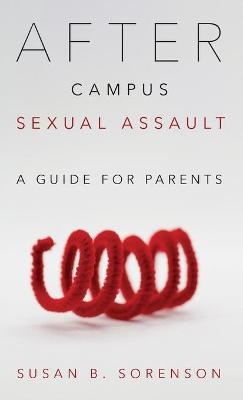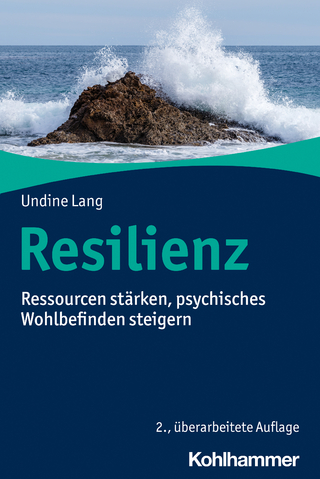
After Campus Sexual Assault
Rowman & Littlefield (Verlag)
978-1-5381-1772-9 (ISBN)
In 2015, a survey of more than 150,000 students revealed that over 20% of female undergraduates experienced “sexual conduct involving physical force or incapacitation” since starting college.1 Administrators, safety officers, and counselors are all acutely aware that campus sexual assault is a serious problem today.
This issue has also captured the general public’s attention. Campus sexual assault is a focus of the media, including social media. On two recent consecutive Sundays, the New York Times published articles on the topic: a book review of Blurred Lines: Rethinking Sex, Power and Consent on Campus on September 17th and an Op-Ed piece entitled At the Frat House, Lessons About Rape on September 24th. Social media is exploding with personal stories of harassment and assault (e.g., #MeToo, #YesAllWomen, #NotOkay).
Organizations that share the goal of ending sexual violence include End Rape on Campus (www.endrapeoncampus.org), founded in 2013 by survivors of campus sexual assault, and It’s On Us (www.itsonus.org), which was launched by then-President Obama in 2014 and works with students on over 500 college campuses. The Hunting Ground, a documentary about campus sexual assault, was nominated for two Emmy® Awards last year. Lady Gaga performed her song from the film - “Til It Happens to You” - at the awards ceremony.
Fewer than 28% of college students who have been sexually assaulted report the incident to campus authorities or the police.1 Do they tell their parents? If so, how do family members react?
Combining compassion with clinical expertise, Dr. Susan B. Sorenson set out to find the answers to these questions. After Campus Sexual Assault is the result of Dr. Sorenson’s interviews with nearly 50 victims and their families as well as campus administrators. Quoting liberally from the interviews, this powerful book sheds light on how young women cope with sexual violence and how their loved ones may help the healing process.
Obviously, efforts to reduce sexual assault on campus are important. Perhaps less obvious, but equally significant, is the need to give a voice to those who have been victimized. After Campus Sexual Assault provides a unique platform for vulnerable victims as well as a critical source of information for their friends and families.
Susan B. Sorenson, PhD, public health researcher and clinical psychologist, is a Professor of Social Policy at the University of Pennsylvania. Her career—teaching, research, policy, and clinical work—has focused on violence and its prevention.
Chapter 1. How Families Work: No Blank Slates, addresses the different ways that families function and how those functions can be challenged as well as reinforced when dealing with the crisis of a sexual assault. By the time they get to college, many students have dealt with other trying circumstances that shape who they are and how they deal with the world and an assault.
“Parenting is always hard. Parenting in the current environment, I think, is a little harder, it’s a little riskier. You don’t wanna make a bunch of steel-skinned children. You want them to be open and receptive and willing to experiment and try new things. Those are important things.” Sharon
Chapter 2.College Today: Some Things the Same, Some Not, acknowledges the excitement, anxiety, and relief of all when a daughter begins college. Although they, too, might have attended college, parents can’t assume that their rosy recollections of those years will be the experience of their daughters.
“[School name] was her first choice school. She applied early decision and got in. It was like God himself reached down and gave his blessing and said you may go to this wonderful institution.” Eric
Chapter 3. So What Happened: Stories Parents Seldom Hear, outlines the range of experiences that comprise sexual assault. It also describes the definitions and labels daughters give to their experiences, a process that likely shapes the conversations, if any, to follow. The chapter title includes “Stories Parents Seldom Hear” because parents rarely learn much about the assault itself.
“The next morning I woke up there and I ran out. I had blood and I was just so freaked out. But I wasn’t really sure what had happened. I just thought, oh, well, that was a shitty way to lose your virginity. I didn’t realize that what had happened was not consensual. It didn’t click back then.” Ellie
Chapter 4. Giving and Getting the News: Blame, Shame, and Sometimes Longing, talks about daughters’ decisions to tell or not tell a parent and the parent’s initial reaction, sometimes helpful and sometimes the source of additional stress. The interactions often involve some combination of blame, shame, and longing.
“I said he didn't punch you, you were not raped, and therefore it's not that big of a deal. And as I'm saying these words, I have horrific guilt – it's very painful. But that's what transpired at the time. She was very upset that she didn't get the family support that she needed... she was obviously emotionally traumatized.” Tony
Chapter 5.Struggling, Problem Solving: Assault is like a Rock in your Shoe, It’s Always There, asserts that campus sexual assault is more than a single event. Daughters and parents deal with the event and its aftermath for an extended period, often negotiating and renegotiating their relationship in the process. Parents deal with the aftermath regardless of whether they were told about the assault.
“It gave me a lot of problems with my relationship with my mom after that. I had problems with her before. I don't know why I decided to call her about it but I guess I thought that's what people do. But it kind of destroyed my relationship with her from my own emotional standpoint. And I also – I was drinking just way too much. I think I felt, especially after I joined a sorority, I was like, I just wanna be the happy girl that I was. And maybe if I'm really happy and really cool that it won't matter that this happened, and no one will know that I have this underlying problem.” Nicole
Chapter 6. Fathers, Often on the Sidelines, recognizes that fathers typically are a bit different than mothers in terms of helping a daughter deal with sexual assault. It was common for fathers to stay a bit on the periphery.
We actually have not spoken about it. I mean, Maria and her mom are like this [wraps middle finger around index finger] and I'm kind of like the third person out and that doesn't bother me….But I have made it very clear to her that in no way did I feel that any of that was her fault. So I guess I kid with Maria a lot and I don't know if I threw it to her as a joke or how I tried to open the conversation, but I made it known that, well, I think I said I wanted to go break his legs. Jeremy
Chapter 7. Study Abroad, addresses the special issues involved when a daughter is sexually assaulted when participating in a study abroad program. The novelty of the setting and less familiarity with the culture, customs, and laws – as well as concern about not wanting to come across as an “ugly American” – can combine to create special vulnerabilities.
“Most of the conversation had to do with: What do I do? Should I stay? Should I come home? If I stay, what should I do?...A friend of mine told me that (my daughter) should reach out to the American Embassy. They were amazing. She decided to go to the police and press charges and the Embassy actually escorted her to the police to report what happened. The police, of course, didn’t believe her. There were like, well, where’s the evidence? I mean, they basically almost laughed her out of there – there’s no crime here. But when they found out that she had the incorrect visa, they were gonna throw her in jail. People sit in jail in [country name] for weeks.” Kathy
Chapter 8. Dealing with Systems, talks about the decision to seek help from police, health care professionals, and campus authorities. It also discusses what systems are in place to support students and how to navigate them.
“Did I leave feeling like I had struck a blow for justice? No.” Yolanda
Chapter 9. Campus Sexual Assault: The Big Picture, puts the individual stories into a larger context. It provides a sense of how campus sexual assault has been viewed over time (e.g., the first study of campus sexual assault was published in 1957) and describes the nature and scope as best we know it. Relying on the published literature over the years, this chapter is not expected to include quotes.
Chapter 10. Moving Forward, attempts to convey some of the ways that daughters and families begin to come to terms with what happened and their hopes for moving on.
“I just wanna see her go down the aisle someday and be married and be happy. There’s not a time I don’t go to church or that I don’t pray that I can see them with grandkids because when you’re in your 60’s, and they’re still in college, it’s, I just hope I don’t go before they get to where I’d like to see them be.” -- Aaron
| Erscheinungsdatum | 16.08.2020 |
|---|---|
| Verlagsort | Lanham, MD |
| Sprache | englisch |
| Maße | 148 x 228 mm |
| Gewicht | 458 g |
| Themenwelt | Sachbuch/Ratgeber ► Gesundheit / Leben / Psychologie ► Lebenshilfe / Lebensführung |
| Sachbuch/Ratgeber ► Gesundheit / Leben / Psychologie ► Psychologie | |
| Geisteswissenschaften ► Psychologie ► Angst / Depression / Zwang | |
| Sozialwissenschaften ► Soziologie | |
| ISBN-10 | 1-5381-1772-X / 153811772X |
| ISBN-13 | 978-1-5381-1772-9 / 9781538117729 |
| Zustand | Neuware |
| Haben Sie eine Frage zum Produkt? |
aus dem Bereich


